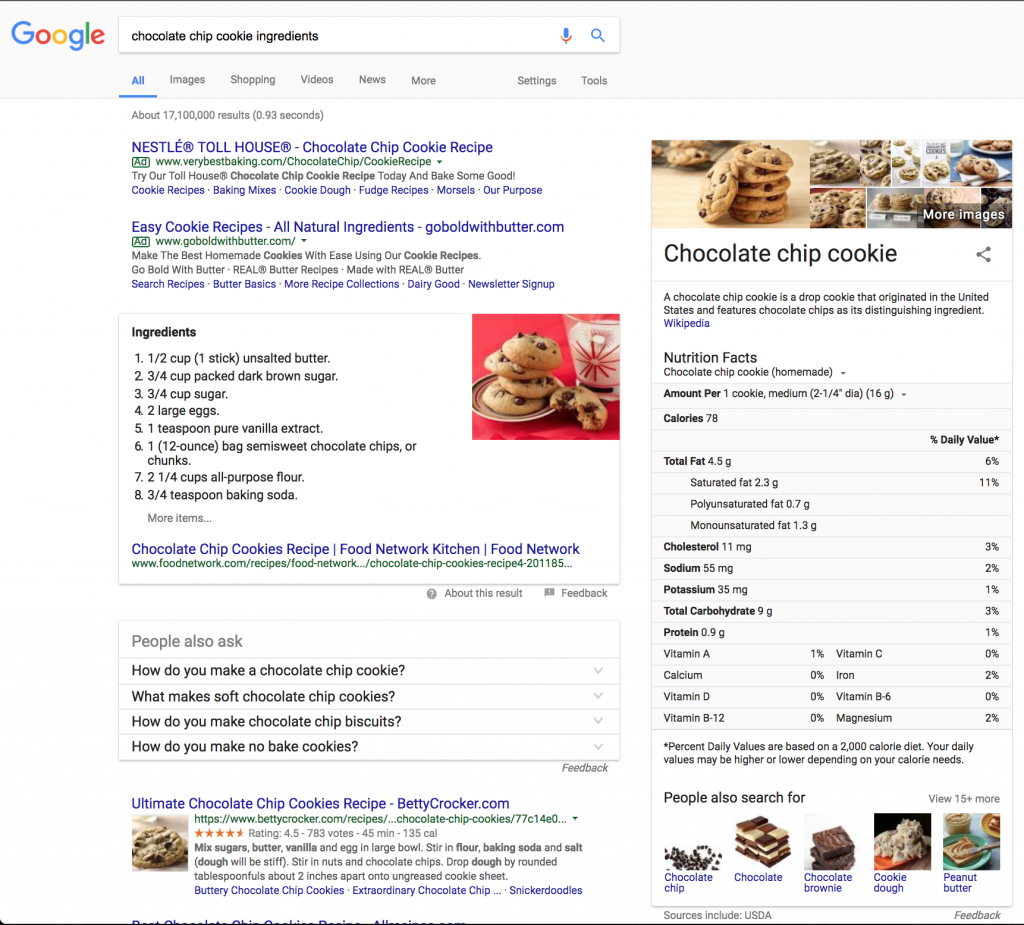Search engines are getting smarter and SEOs must do the same. Google started using machine-learning to help process search results and consequently, digital marketing has become a lot more complicated and has forced SEOs to also become marketers.
How does Google use machine learning?
RankBrain is Google’s machine-learning, artificial intelligence system. Its primary purpose is to help sort the search results to give users the best possible answers to their queries. Google’s primary purpose, beyond not being evil, is to make money – it’s a company and companies need to make money. For Google to do that, they need users to continue searching on their engine, seeing ads, and coming back repeatedly. If they want users to keep coming back, they have to give them what they want quickly and with as little friction as possible. That’s where machine learning comes in.
Understanding query intent.
One of RankBrain’s primary purposes is understand the meaning behind search phrases instead of directly matching keywords. Check out the example search for “chocolate chip cookie ingredients” below.

Google is showing results for the ingredients, sure. They are also prominently showing results for recipes. The top organic result has the title tag “Ultimate Chocolate Chip Cookie Recipe” and the featured snippet is from a page with the title “Chocolate Chip Cookie Recipe” while our search is for “chocolate chip cookie ingredients.” Google understands that someone looking for the ingredients is likely looking for a recipe. They understand the typical intent behind the search.
What does this mean for SEOs? It means it’s no longer good enough to seek and optimize a page for the highest trafficked keywords. SEOs have to understand what question the queries are asking and optimize the page to answer the question.
Using user behavior.
Google has been using user behavior as a ranking factor for a while now and it makes sense. What better signal can Google use to rank sites than how their users interact with sites?
Get the click.
Getting a user to click through to your site from the search engine results page is the goal. In order to get them to click on your little blue link, or title tag, in the search engine results page is more involved today than it has ever been. The days of stuffing a title tag and meta description with keywords are limited in favor of title tags that carry a marketing message and brand, as well as convince the searcher that that link is going to answer their query. Those are the first two opportunities you have to introduce your brand to a searcher, so make a good impression.
Answer the searcher’s query better than the competition.
When a user enters a search query, clicks on the link, and goes back to the results immediately, it shows Google that the first result they clicked didn’t provide a sufficient answer. If enough users send similar signals, Google will shift the results based on the user’s behavior. Rand Fishkin of Moz ran an experiment to test this behavior. Check out the test and results below.
Rand shared the results around 70 minutes later.
This experiment shows that Google is shifting ranking results in real time based on user behavior.
What does this mean for SEOs? SEOs have to make sure content gives the best possible answer or result to that query, whether it’s informational, navigational, or transactional. Ask yourself if the page deserves to rank above the competition. It’s not about tricking the search engine anymore – it’s about earning the placement.
Make the website the best it can be.
Make sure you understand the intent behind a searcher’s query, you use the title tag and meta description to entice a click, and you answer the query better than the competition. Everything an SEO does to a site should answer one simple question: Does this make the site better for the target audience? If the answer isn’t an easy yes, reconsider.
That’s the new secret sauce in SEO: Make the site the best it can be and deserve to outdo other sites in search.






